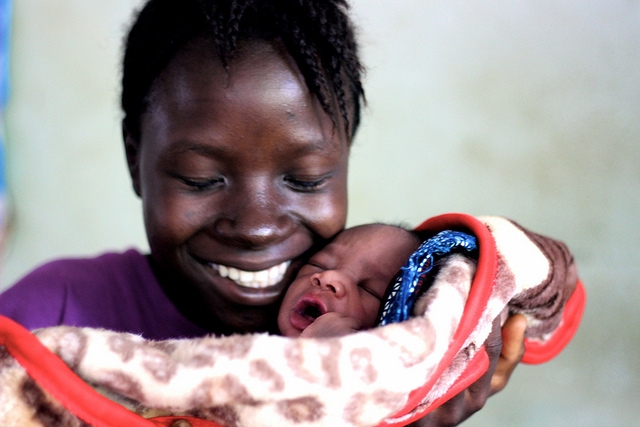Elsevier, The Lancet Global Health, Volume 2, 2014
Background: A third of the 2·5 billion people worldwide without access to improved sanitation live in India, as do two-thirds of the 1·1 billion practising open defecation and a quarter of the 1·5 million who die annually from diarrhoeal diseases. We aimed to assess the eff ectiveness of a rural sanitation intervention, within the context of the Government of India's Total Sanitation Campaign, to prevent diarrhoea, soil-transmitted helminth infection, and child malnutrition.
Elsevier, Journal of Criminal Justice, Volume 42, July 2014
Purpose: History shows that one of the most important institutions to a society is its criminal justice system. The current study offers an analysis of the criminal justice system's effectiveness in identifying, apprehending, convicting, and punishing high-level/persistent offenders. Methods: Data were drawn from all four waves of the Add Health study. Survey-corrected univariate statistics and logistic regression models were estimated to provide population parameter estimates of the frequency of arrest and punishment for a group of persistent offenders compared to non-persistent offenders.
Elsevier, Energy Research and Social Science, Volume 1, March 2014
Energy is central to the survival and prosperity of human society, which explains the social sciences' interest in energy production, consumption and distribution. The emergence of the global environmental agenda in the second half of the 20th century gave rise to a distinctive research literature on how energy systems and global environmental protection are interconnected. The threat of disruptive climate change, in particular, has thrown the spotlight on the central role that energy plays in shaping the future relationship between human society and its natural environment.
Elsevier, Diabetes Research and Clinical Practice, Volume 103, February 2014
Introduction: Diabetes is a serious and increasing global health burden and estimates of prevalence are essential for appropriate allocation of resources and monitoring of trends. Methods: We conducted a literature search of studies reporting the age-specific prevalence for diabetes and used the Analytic Hierarchy Process to systematically select studies to generate estimates for 219 countries and territories. Estimates for countries without available source data were modelled from pooled estimates of countries that were similar in regard to geography, ethnicity, and economic development.
Elsevier, Current Opinion in Environmental Sustainability, Volume 8, June 2014
Sub-Saharan Africa needs to produce more food, feed, and fiber to support its growing population and intensification of smallholder agriculture is a crucial component of any strategy towards this goal. Sustainable Intensification (SI) acknowledges that enhanced productivity needs to go hand in hand with the maintenance of other ecosystem services and enhanced resilience to shocks. A very diverse group of smallholders dominate SSA agriculture, with large heterogeneity in socio-technical conditions, famer typologies, production objectives, and the biophysical environment.
Elsevier, The Lancet, Volume 383, 2014
A new Global Investment Framework for Women's and Children's Health demonstrates how investment in women's and children's health will secure high health, social, and economic returns. We costed health systems strengthening and six investment packages for: maternal and newborn health, child health, immunisation, family planning, HIV/AIDS, and malaria. Nutrition is a cross-cutting theme. We then used simulation modelling to estimate the health and socioeconomic returns of these investments.
Elsevier, World Development, Volume 63, November 2014
For economic development to succeed in Africa in the next 50. years, African agriculture will have to change beyond recognition. Production will have to have increased massively, but also labor productivity, requiring a vast reduction in the proportion of the population engaged in agriculture and a large move out of rural areas. The paper questions how this can be squared with a continuing commitment to smallholder agriculture as the main route for growth in African agriculture and for poverty reduction.
Elsevier, The Lancet, Volume 383, 2014
Despite large gains in health over the past few decades, the distribution of health risks worldwide remains extremely and unacceptably uneven. Although the health sector has a crucial role in addressing health inequalities, its efforts often come into conflict with powerful global actors in pursuit of other interests such as protection of national security, safeguarding of sovereignty, or economic goals. This is the starting point of The Lancet-University of Oslo Commission on Global Governance for Health.
Elsevier, Food Safety Management: A Practical Guide for the Food Industry, Volume , November 2013
Over the past decades, more attention has been placed on the quality and safety of our foods, driven primarily due to higher incidence of foodborne diseases, large-scale outbreaks as well as incidents and recalls due to unacceptable levels of chemical hazards in our foods. Food safety incidents have undoubtedly contributed to a loss of trust of consumers and have created misperception on the subject, although among experts there is a broad consensus that the food supply has never been safer.

